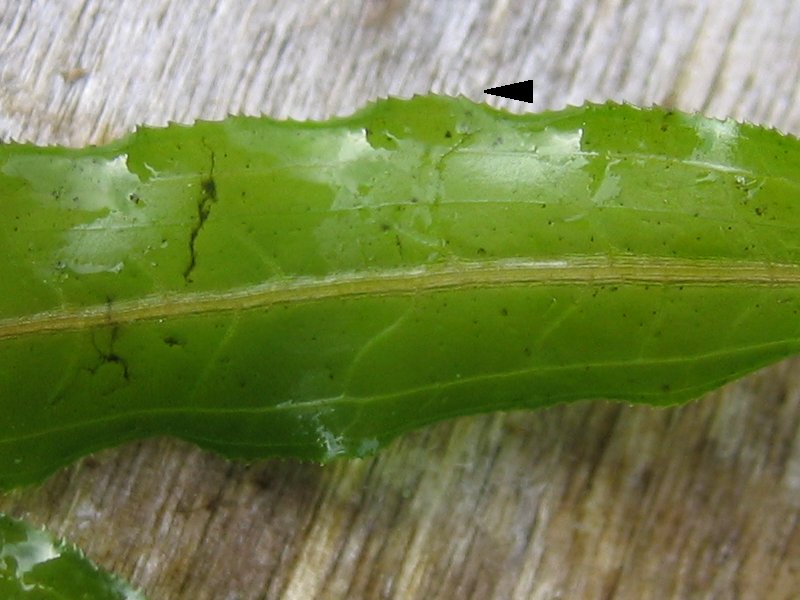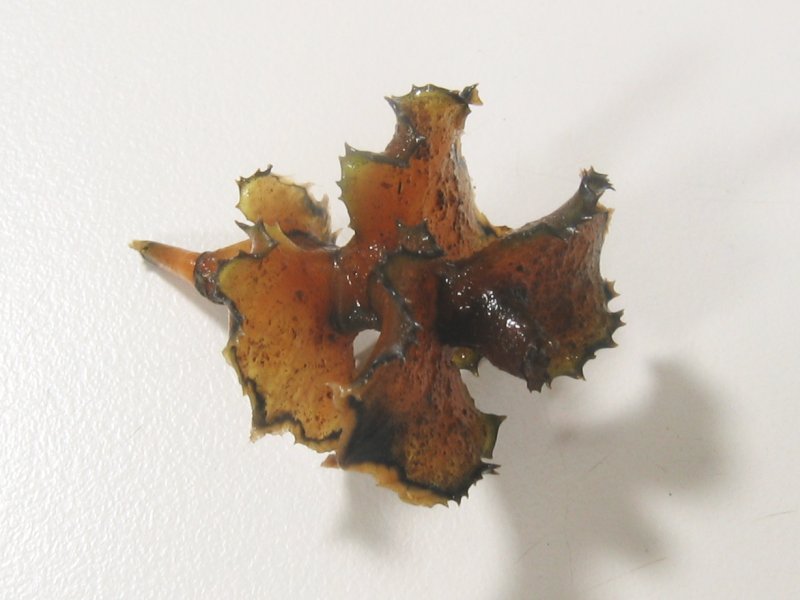Curly pondweed (Potamogeton crispus)
Where?
Curly pondweed grows best in nutrient-polluted (hypertrophic), slow-moving to stagnant waters. It is typical of waters in intensively managed areas.
Appearance?
Curly pondweed is a perennial, winter and deciduous herbaceous plant, with light to olive green leaves in summer that turn brownish in winter. It grows anchored to the bottom of the water with leaves that are wavy at the edges and distinctly toothed. The toothed leaves are a distinct identifying characteristic of Potamogeton crispus.
Special features?
Flower spikes up to 2 cm long form on the water surface from June to August. The overwintering form benefits the spread of the pondweed.

Easy to recognize: The toothed leaves of Potamogeton crispus
Kristian Peters -- Fabelfroh 14:40, 29 December 2005 (UTC), CC BY-SA 3.0, via Wikimedia Commons

Form of preservation, which sinks to the bottom of the water in winter, this is also a vegetative possibility of spreading.
Kristian Peters -- Fabelfroh 13:07, 10 October 2006 (UTC), CC BY-SA 3.0 , via Wikimedia Commons
This website uses no external trackers, no analytics, just session cookies and values your online privacy.

